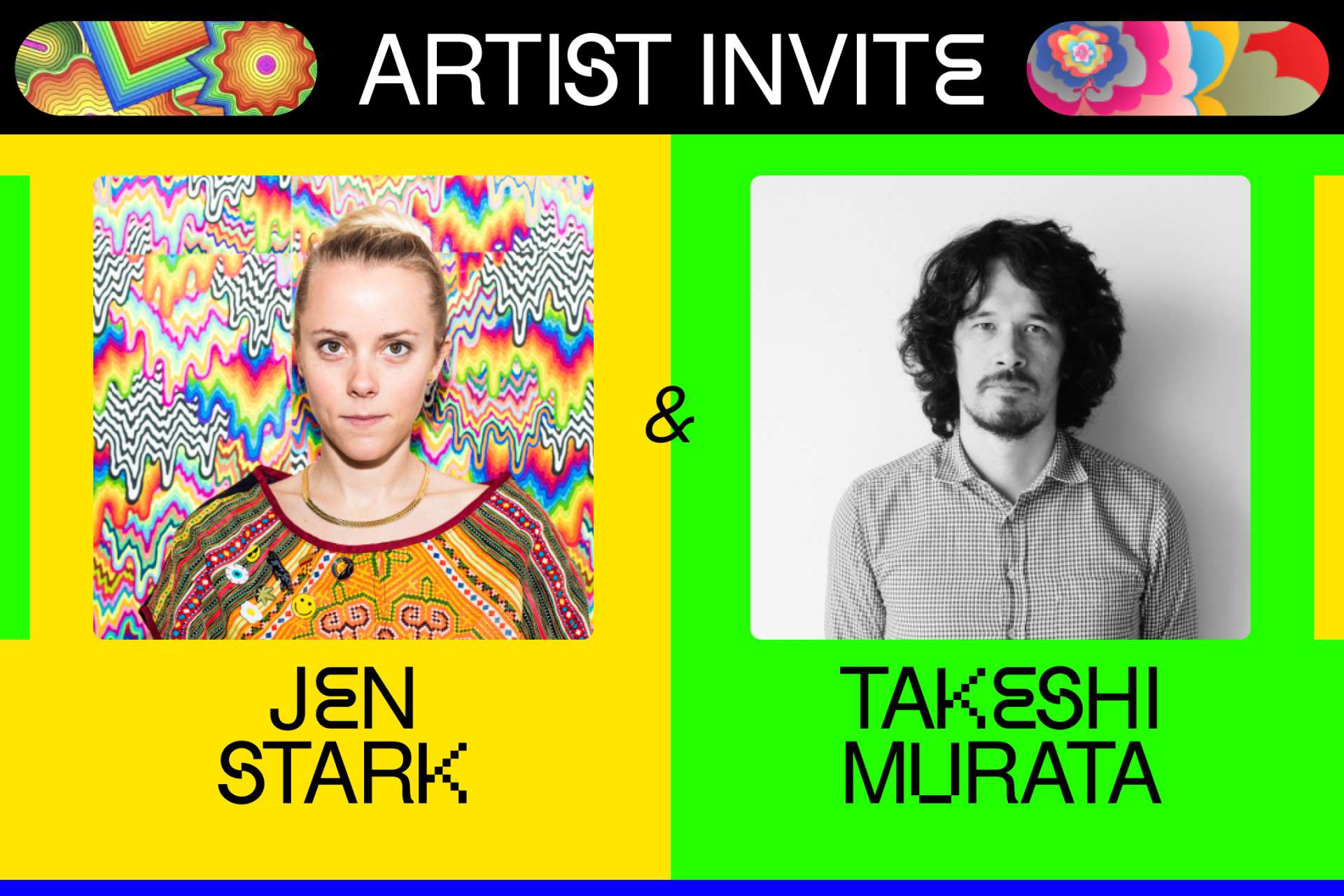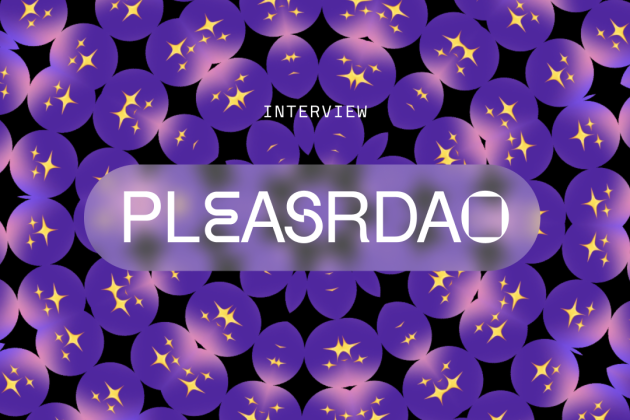Artist Invite: Jen Stark & Takeshi Murata

Jen Stark was blown away by the simple elegance of Takeshi Murata’s shapes and animation techniques. In 2009, she wrote him an email telling him how much she enjoyed his work. Almost a decade later, the two met at Takeshi’s exhibition at MOCA in Los Angeles, sparking engaging and inspiring conversations that have continued to the present day. Over the years, the two have identified with one another’s work, exchanged stories, and formed a longtime friendship.
Artist Invite is a new series that delves a bit deeper into the connections between artists. Much like the blockchain shows clear provenance between an NFT and its creator, on Foundation, we’re drawing lines between artists to show how they found their way into the NFT space. A week ago, Jen invited Takeshi to join Foundation, and now she’s showing him the ropes. Takeshi appreciates the experiential nature of Jen’s practice, particularly how she’s honed in on the psychedelic—a thread that runs through both artists’ work. Both Jen and Takeshi make art that’s just plain exciting to watch.
The two got together to chat about their individual practices, and their new approaches to creating work as NFTs.
What do you look to for inspiration when not in the studio?
Jen Stark: I am a firm believer in taking breaks, relaxing, and doing other hobbies to help refresh creativity. I love cooking, gardening, and also taking baths. There's a story I like to reference about a Greek scholar who made a big discovery while relaxing in the bathtub one day. Upon stepping into the tub, he noticed that the water level rose, and understood that the volume of water displaced must be equal to the volume of the part of his body he had submerged. So sometimes breakthroughs may be more likely when you're in relaxation mode. My takeaway is that it's important to do things outside of your studio practice, this will help bring creativity and insight to the work.
You use technology very well in both your art and career. What technological advance are you most looking forward to or would you most like to see in the future?
Jen Stark: Thanks! : ) Yes I'd definitely like to see technology evolving faster to help solve modern day problems, like developing better and more accessible renewable energies. I'd love for people to be able to harness power from the sun and wind in a more affordable way, without costing tens of thousands of dollars. It would be amazing to have something more efficient and tiny, like nanobot solar panels. I love the idea of having an outdoor garden sculpture or installation that has a renewable energy element, and feeds energy back into the house. I have a lot of hope that technology will solve some of the big issues we are facing and even help save us.
Has the past year changed any of your views on art and your practice?
Jen Stark: The past year has helped me realize I need to trust my gut instinct more and to only accept the projects I'm feeling 100% about, and let go of the ones I'm hesitant about. It made me more introspective and able to better let go of things that weren't serving me or bringing positivity to my life. It also made me less worried about having fomo and more able to focus on my path in life.
2020 was definitely a challenging year, but I think I grew a lot and it gave me a new surge of creative inspiration.
How and when did you begin creating your animations?
Takeshi Murata: I really got into it after moving from NYC to LA in the mid 2000’s. Rent in NYC was terrible and LA offered more space with less need of a high paying day job. I started making my own videos in my off time. I had no real goal in mind aside from sharing them with friends. Simultaneously, I was discovering West Coast filmmakers like Jordan Belson and Kenneth Anger. It was a very inspiring time. Our mutual friends, Jim Drain and Ara Peterson, meanwhile had cracked into the art world with their video/performance collective Force Field. They helped get me into my first group shows in galleries in LA and SF. Things moved pretty fast from there and soon I was able to stop working other jobs completely and focus on my own animations.
If you weren't an artist, what other job would you be doing?
Takeshi Murata: I feel so fortunate to be an artist, I don’t give other professions much thought, honestly. Most professions wouldn’t have me anyway. I’ve been making soundtracks to future animations in my spare time. Not exactly outside of the field of art, but I’d love to dedicate more time to playing. Having a Moog synthesizer this past year has been really good for my overall well-being. Though this is probably due, in no small part, to it not being my job.
What is the most interesting aspect of an NFT for you and where do you see it evolving?
Takeshi Murata: I’m interested in the way this space has opened video art collecting to a new, energetic audience. This is something that’s not easily accomplished, especially while surpassing traditional art sales. It will be interesting to see what drives the new aesthetic criteria. Ideally there will be some crossover with established institutions as well and hopefully the NFT space will evolve to help more weirdos connect and make rent.
Read more

PleasrDAO’s $5.5M purchase of Edward Snowden’s genesis NFT.

exonemo on communicating love and hate for NFTs.
